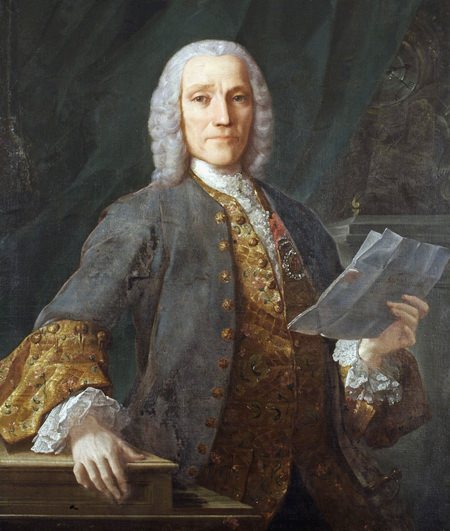
The other day, while chatting with one of the dogs outside Tesco-Lotus, it occurred to me that animals of all sorts have been the inspiration for many classical works. The most obvious I suppose is The Carnival of the Animals by Camille Saint-Saëns who brought a collection of them, including some pianists and fossils into an entertaining musical menagerie.
Bach is well-known for his sheep in Sheep May Safely Graze, which is actually the title of an aria in his Cantata No. 208. Edward Elgar wrote about bears in his Wand of Youth Suites and Haydn wrote a symphony which later became known as The Bear, not because it sounded like one, but because at several moments the music imitates the bagpipes, which were invariably used to accompany dancing bears in the streets of eighteenth century Europe.
Aaron Copland wrote a lovely work for a movie called The Red Pony and another American composer, Alan Hovhaness wrote a symphonic poem for orchestra entitled And God Created Great Whales. And of course, a whale is an animal even though it doesn’t look like one. The French composer Darius Milhaud is famous for his ballet The Ox on the Roof and the equally French Francis Poulenc wrote a charming setting of Babar the Elephant based on the children’s book Histoire de Babar by Jean de Brunhoff. If you have time on your hands, you can probably think of some more.
The year 1685 was a good one for music. It saw the birth of three great composers, Johann Sebastian Bach, George Frederick Handel and Domenico Scarlatti. Although Scarlatti was born in Naples into a well-known musical family, he spent much of his professional life in the service of the Portuguese and Spanish royal families. As a result much of his work, and especially his 555 keyboard sonatas (yes, five hundred and fifty-five) show the influence of Iberian folk music.
Domenico Scarlatti (1685-1757): Essercizo Nr 30 – Cat Fugue. David Clark Little (virginal) (Duration: 05:10; Video 480p)
Scarlatti’s most famous collection of keyboard music was his modestly-named Essercizi (“Exercises”) published in 1738. It was well-received all over Europe and this fugue is the last number in the collection. A fugue is a relatively complex style of composition that developed during the seventeenth century and was usually written for keyboard. It always began with the main theme played on its own. The theme was later imitated in the other parts, while various musical ideas were interwoven and developed during the course of the highly structured work. It needed exceptional technical skill to write a good one, and most musicians agree that our old friend JSB wrote the best.
But you’re probably wondering about the cat. Legend has it that Scarlatti had a pet cat called Pulcinella, who evidently enjoyed walking on the keys of the composer’s harpsichord. Whether the story is true or not is anyone’s guess, but it certainly explains the puzzling and seemingly random notes of the fugue theme. Although the composer didn’t make any feline references in the original manuscript, the work has always remained popular among keyboard players.
In this video, the fugue is played on a virginal (sometimes referred to in the plural) which is a smaller, simpler and quieter form of the harpsichord in which the single strings run parallel to the keyboard. The instrument was usually made without legs and was placed on a table for playing. But just listen to the strange opening theme (thanks presumably to the cat) which must have seemed unworldly to eighteenth century listeners.
George Gershwin (1898-1937): Walking the Dog. Sebastian Manz (clt), Martin Klett (pno), Lars Olaf Schaper (db), Arya (dog), Danish String Quartet (Duration: 04:54; Video 1080p HD)
This piece was written in 1937 for the movie Shall we Dance, starring Fred Astaire and Ginger Rogers. The composer wrote an enormous amount of music for this movie including three songs which have become Gershwin classics. The dog-walking piece was published in 1960 under the name Promenade and in the movie it accompanied a sequence in which Fred Astaire walks a dog on board a luxury liner.
Most of the music from the movie has remained unpublished to this day. However, in 2013 it was announced by the Gershwin family that as part of the Gershwin Project, the full orchestral score will eventually be published. The objective of the Project is to create new detailed scores of all Gershwin’s music. Curiously, much of it has never been edited and the original scores of iconic works as Rhapsody in Blue, An American in Paris and the Piano Concerto still contain numerous errors and inconsistencies that remain uncorrected. Needless to say, this is a long-term undertaking so don’t hold your breath. It’s been estimated that the entire project will take between thirty and forty years to complete. We’ll just have to wait.
 |
 |
 |





